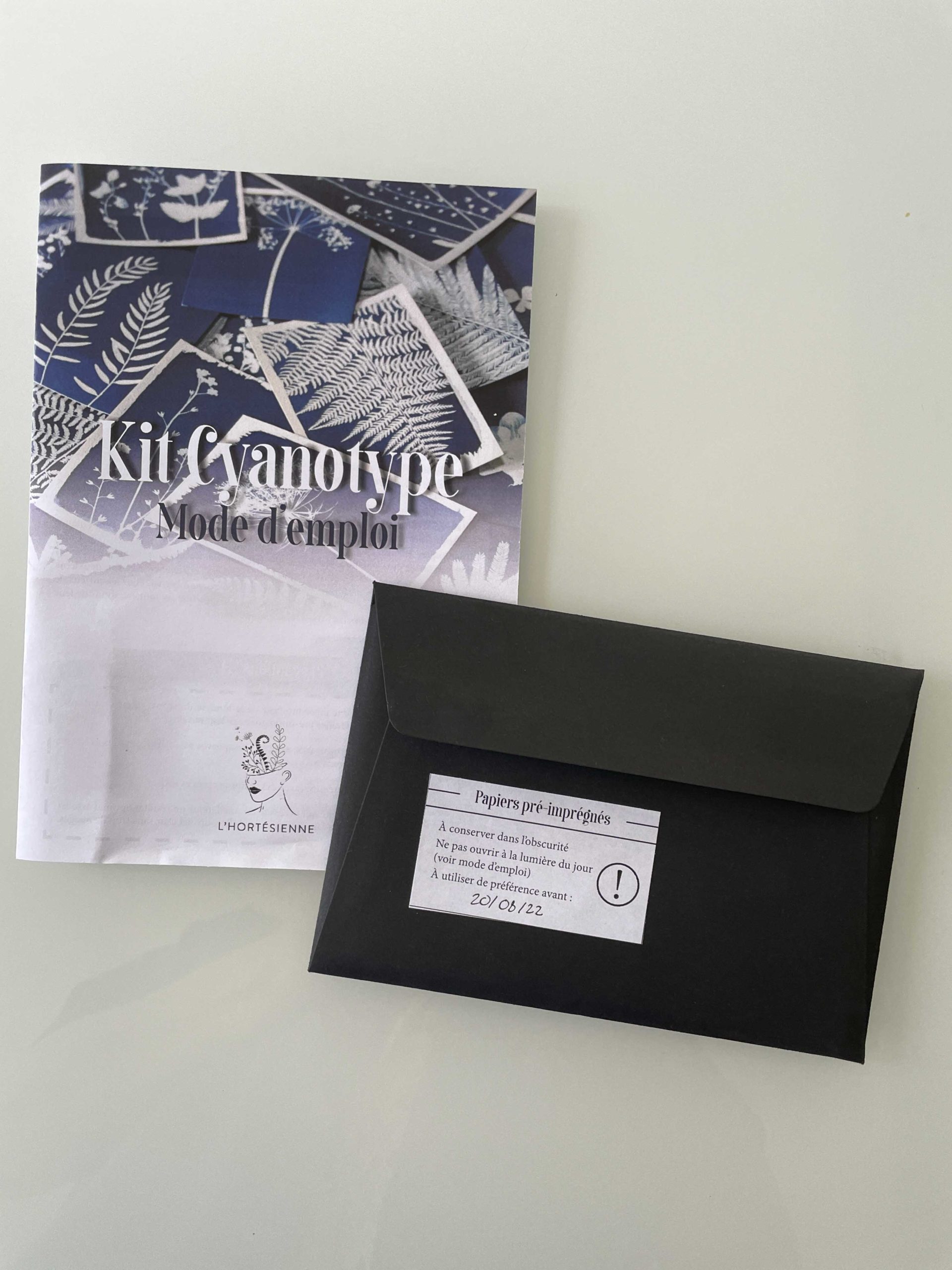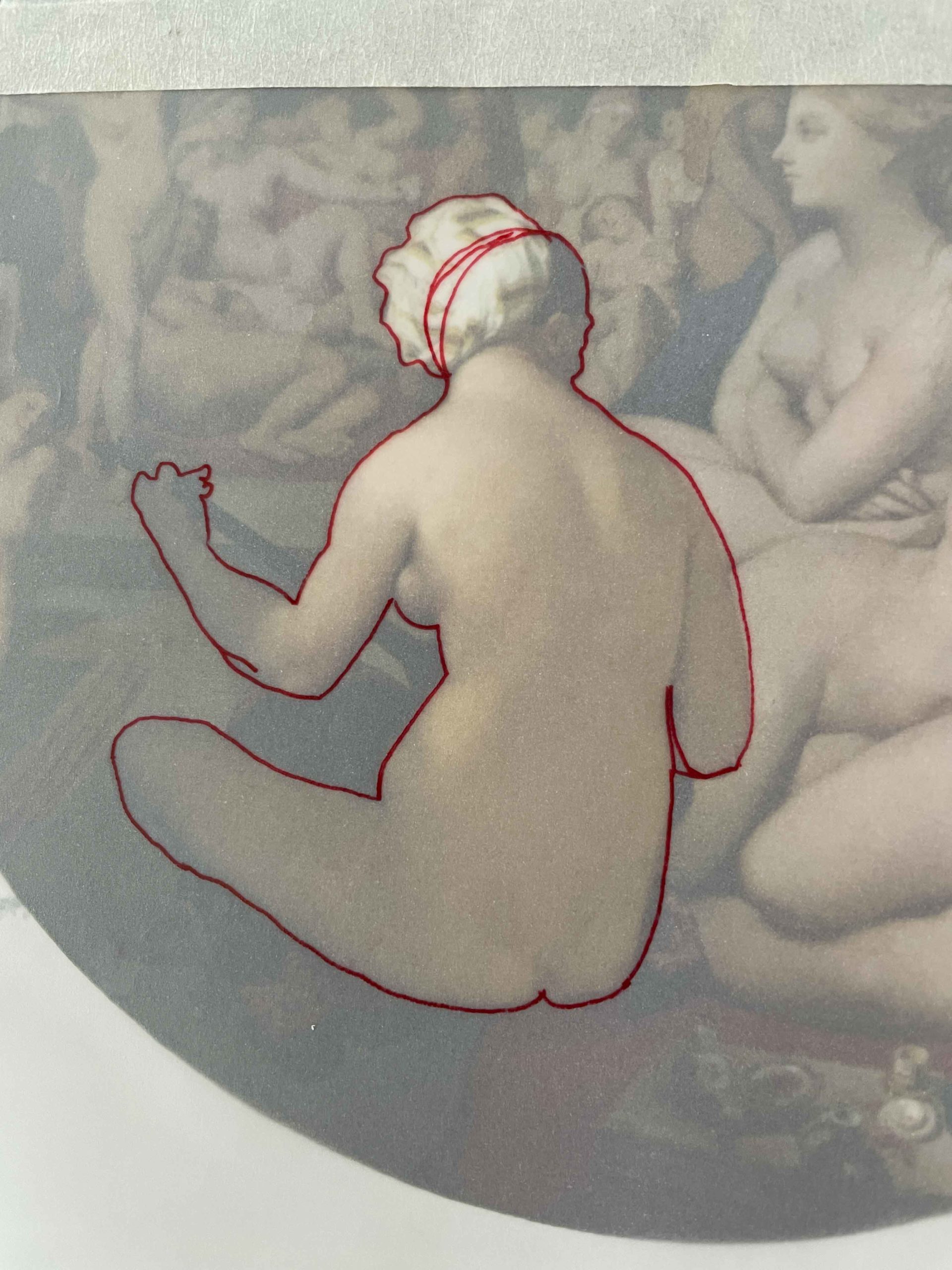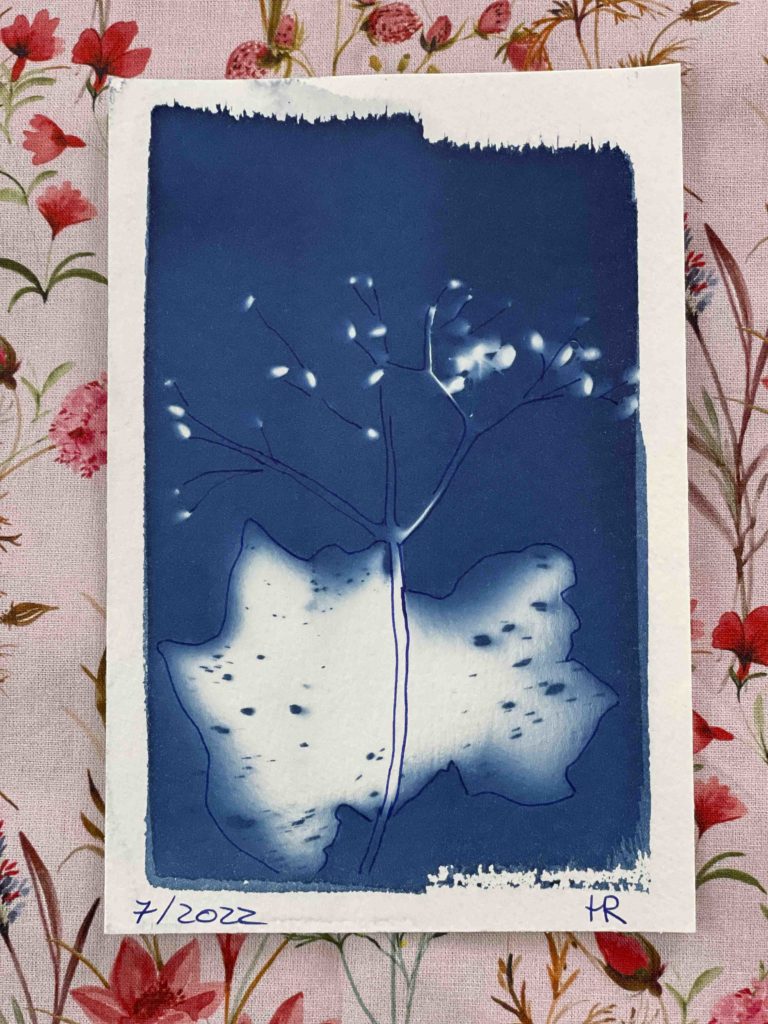Creating Cyanotypes With A Kit.
What Is A Cyanotype?
The cyanotype (from Ancient Greek κυάνεος – kuáneos, “dark blue” + τύπος – túpos, “mark, impression, type”) is a slow-reacting, economical photographic printing process, using chemicals that are sensitive to a limited near ultraviolet and blue light spectrum. It produces a cyan-blue print used for art as monochrome imagery applicable on a range of materials, such as paper and canvas. The process usually uses two chemicals: ferric ammonium citrate or ferric ammonium oxalate, and potassium ferricyanide, and only water to develop and fix.
The cyanotype was discovered and named by Sir John Herschel, who in 1842 published his investigation of light on iron compounds, expecting that photochemical reactions would reveal the infrared extreme of the electromagnetic spectrum detected by his father and the ultra-violet rays that had been discovered in 1801 by Johann Ritter.
Making Cyanotypes At Home.



Due to my interest in photography, I have known about cyanotypes as one of the earliest forms of photography for some time. I had read about Anna Atkins (1799 – 1871) who was an English botanist and photographer. She is often considered to be the first person to publish a book illustrated with photographic images. Her parents were friends of William Henry Fox Talbot, an English scientist, inventor and photography pioneer. Anna learned directly from Talbot about two of his inventions related to photography: the “photogenic drawing” technique, in which an object is placed on light-sensitised paper and exposed to the sun to produce an image and calotypes, using paper coated with silver iodide.
Sir John Herschel, who was also a friend of Anna’s parents, invented the cyanotype photographic process in 1842 and within a year, Anna applied the process to seaweed by making cyanotype photograms that were contact printed “by placing the unmounted dried-algae original directly on the cyanotype paper”. Atkins self-published her photograms in the first instalment of Photographs of British Algae: Cyanotype Impressions in October 1843.

Little has changed in the process since then and now that home kits are readily available, the boom for crafting and creating at home during the Covid pandemic lockdowns, renewed my interest in this process, which I had never tried. I follow several Instagram accounts about cyanotypes and I recently bought a kit from a small business in Normandy, l’Hortensienne. I do buy things from Amazon etc, I am no saint, but I also buy from small local businesses whenever possible and I love what this company does.
Cyanotypes: A Simple Process.
The simplest kind of cyanotype print is a photogram made by arranging objects on sensitised paper. Fresh or pressed plants are a typical subject but any opaque to translucent object will create an image. A sheet of glass will press flat objects into close contact with the paper, resulting in a sharp image. Otherwise, three-dimensional objects or less than perfectly flat ones will create a more or less blurred image depending on the breadth of the light source.
In preparation for my cyanotype afternoon, I gathered and pressed some flowers and grasses and also cut out some silhouettes, copied from famous paintings. Then on one very hot afternoon recently, I prepared my post cards and put them out in the sun for fifteen minutes. I did not have a large enough piece of glass to lay on top of the cards. Instead I used a piece of transparent plastic packaging, secured with hair grips :), so the different elements were not weighed down flat. This results in a more blurred image.















Rinsing The Cyanotypes.
To reveal the image after exposing the light sensitive chemicals to the sun, you simply rinse your paper in clean water, trying not to touch the image with your fingers. I could see that my fingers might leave marks on the paper, so next time I will use tweezers or tongs to hold the paper.
Once the images have been rinsed, you leave them to dry (overnight) and the blue will gradually become more intense. The paper may be slightly warped, but a few days between clean paper and in or under some heavy books will press the cards straight.
Finished Cyanotype Postcards.
As the images that I created had blurred outlines, I decided to hand embellish the images, that is to say draw on them with an ink pen :). When I make another series, I will use a piece of glass to get sharper outlines and see whether I prefer that or not.
Here are some of the the finished images ….









Contemporary Cyanotype Artists.
Cyanotypes have been an art form since the invention of the process, the numbers of artists now employing the cyanotype process has increased, and they are not only photographers.
In the book of the 2022 British Royal Photographic Society exhibition Squaring the Circles of Confusion: Neo-Pictorialism in the 21st Century, eight contemporary artists: Takashi Arai, Céline Bodin, Susan Derges, David George, Joy Gregory, Tom Hunter, Ian Phillips-McLaren and Spencer Rowell employ the craft of photography for postmodern purposes, including the cyanotype.
The Worcester Art Museum’s Cyanotypes: Photography’s Blue Period, displayed uses of the medium that extend well beyond the utilitarian contact-printing of negatives; Annie Lopez stitched together cyanotypes printed on tamale paper to create dresses; Brooke Williams tea-toned her cyanotypes, adjusting their colour to accord with her story as a Jamaican American woman; and Hugh Scott-Douglas experimented with photograms and abstraction.
I am organising a free giveaway of these cyanotypes on my Instagram feed. So, if you fancy one of these cards for yourself or a friend, who needs cheering up, go and have a look here:
https://www.instagram.com/henrie_richer/

Take Care,
Henrie
XO.
